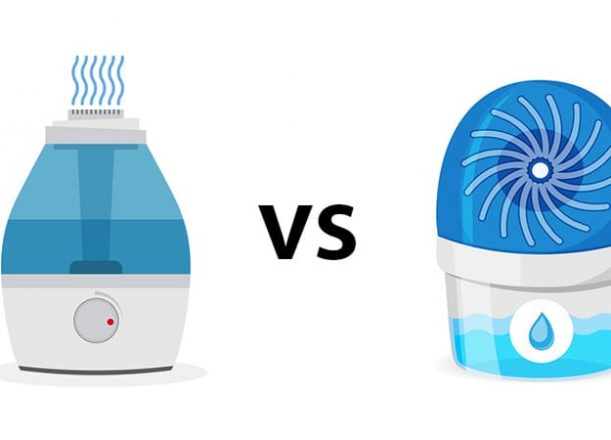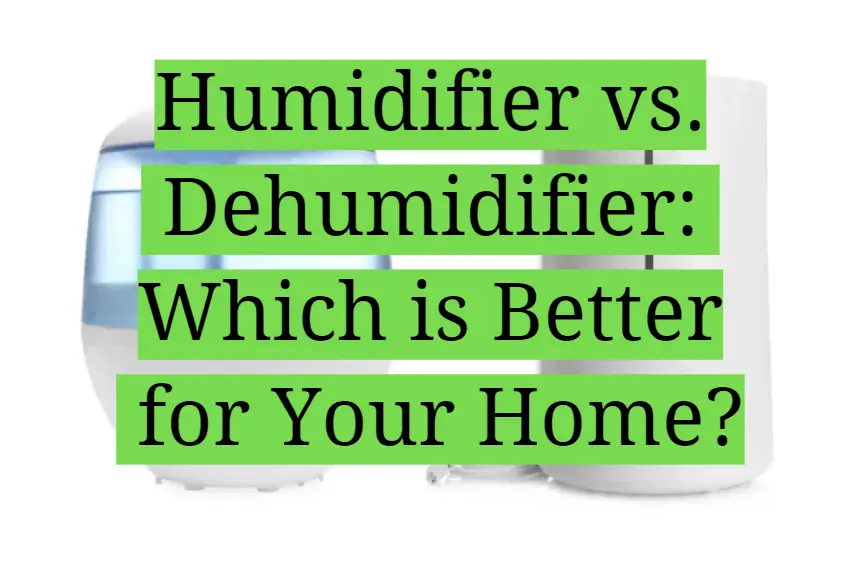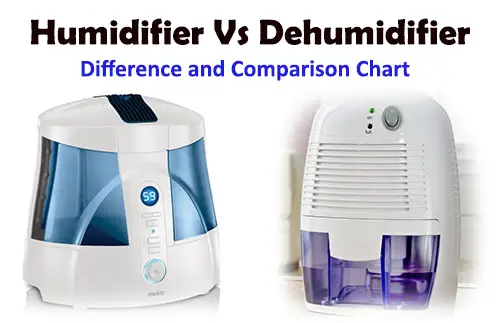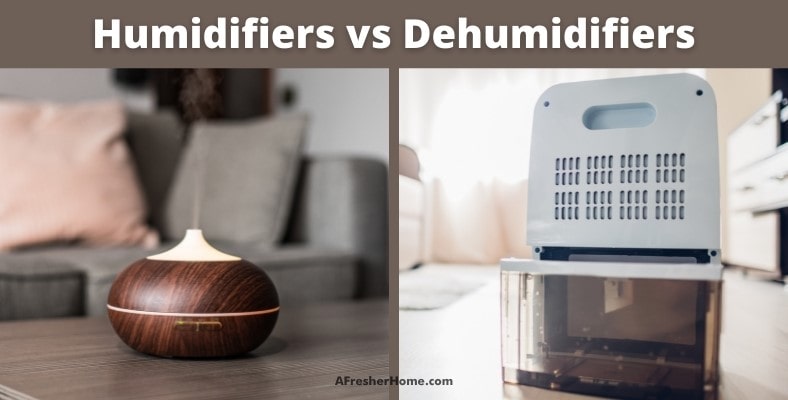Do I Need A Humidifier Or A Dehumidifier
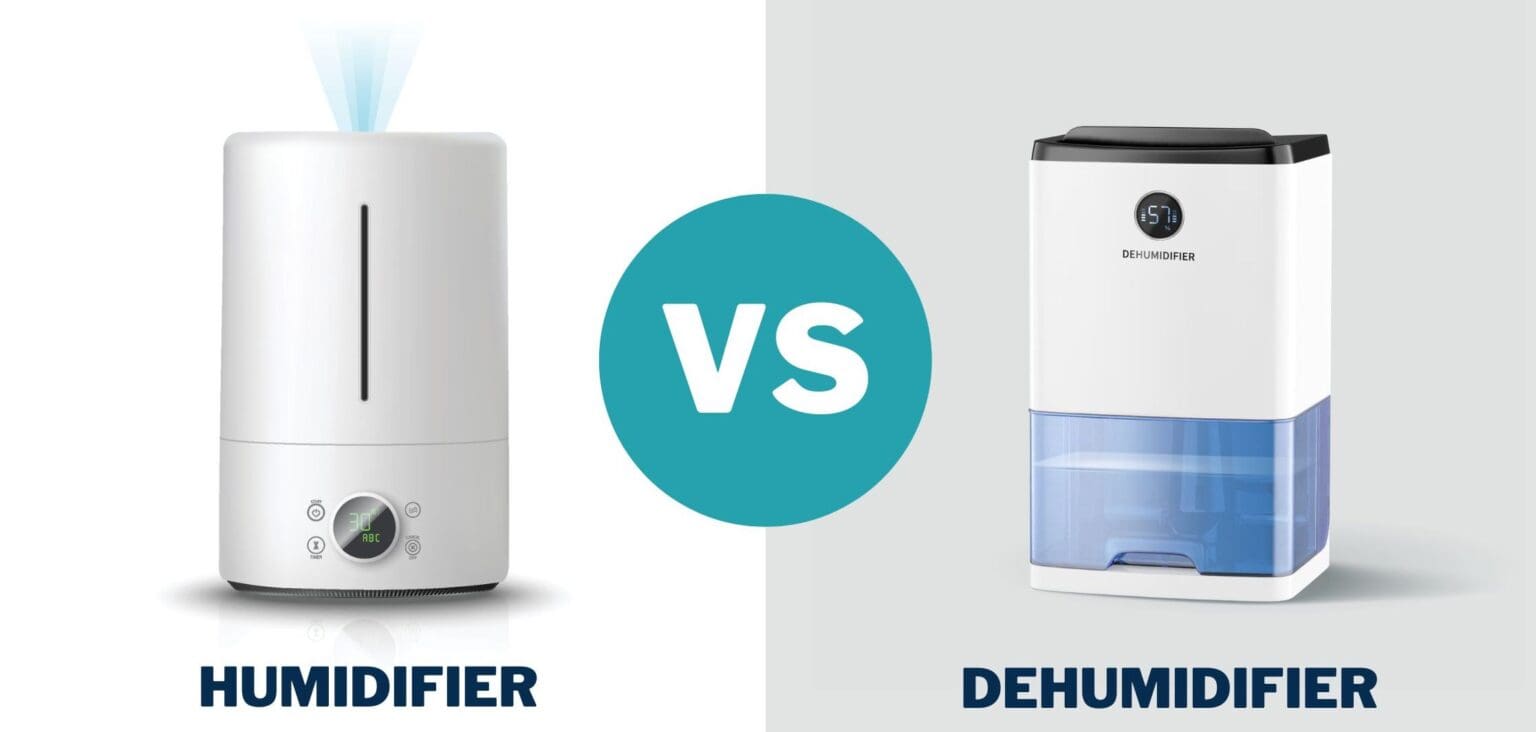
Maintaining optimal indoor air quality goes beyond just temperature control. Humidity, the amount of moisture in the air, plays a crucial role in comfort, health, and even the structural integrity of your property. Determining whether you need a humidifier or a dehumidifier can significantly improve your living or working environment. This article will explore the differences between these systems, help you identify your specific needs, and guide you in making the right choice for your situation.
Understanding Humidity and Its Impact
Humidity is measured as relative humidity (RH), expressed as a percentage. This indicates the amount of moisture in the air compared to the maximum amount it could hold at a given temperature. The ideal RH level for indoor environments is generally between 30% and 50%.
When humidity levels are too high, you might experience:
- Discomfort: Sticky, clammy feeling, making it difficult to cool down.
- Mold and Mildew Growth: Excess moisture promotes the growth of these allergens, potentially causing respiratory problems.
- Property Damage: Warping of wooden floors, peeling paint, and condensation on windows.
- Musty Odors: Unpleasant smells that are difficult to eliminate.
- Increased Pest Activity: Some pests, like dust mites and cockroaches, thrive in humid environments.
Conversely, when humidity levels are too low, you might encounter:
- Dry Skin and Irritated Eyes: Lack of moisture can lead to dry, itchy skin, chapped lips, and irritated eyes.
- Respiratory Issues: Dry air can exacerbate asthma and allergies, and increase susceptibility to colds and flu.
- Static Electricity: Annoying shocks from touching objects.
- Damage to Wooden Furniture: Dry air can cause wood to crack and warp.
- Increased Heating Costs: Dry air feels cooler than humid air, leading you to turn up the thermostat.
Humidifiers: Adding Moisture to the Air
A humidifier adds moisture to the air, raising the relative humidity. There are several types of humidifiers available, each with its own advantages and disadvantages:
Types of Humidifiers
- Central Humidifiers: Integrated into your HVAC system, these humidifiers add moisture to the entire home. They are the most expensive option but offer the most consistent humidity control. Consider a central humidifier if you need to humidify a large area or your entire home.
- Evaporative Humidifiers: These humidifiers use a wick or filter to absorb water, which is then evaporated by a fan. They are relatively inexpensive and easy to maintain.
- Ultrasonic Humidifiers: These humidifiers use ultrasonic vibrations to create a fine mist that is released into the air. They are quiet and energy-efficient.
- Steam Vaporizers: These humidifiers boil water and release steam into the air. They are effective at killing bacteria but can be hot to the touch.
- Cool Mist Humidifiers: These humidifiers release a cool mist into the air, making them a safer option for homes with children and pets. Both evaporative and ultrasonic humidifiers can be cool mist.
Choosing the Right Humidifier
The best type of humidifier for you will depend on your specific needs and budget. For whole-house humidification, a central humidifier is the most effective option. For smaller spaces, an evaporative, ultrasonic, or steam vaporizer humidifier may be sufficient.
Cost: Portable humidifiers range from $30 to $200, while central humidifiers can cost $300 to $1000 or more, plus installation. Running costs depend on the type and usage but are generally low.
Maintenance: All humidifiers require regular cleaning to prevent the growth of mold and bacteria. Evaporative humidifiers require filter replacement.
Dehumidifiers: Removing Excess Moisture
A dehumidifier removes moisture from the air, lowering the relative humidity. This helps to prevent mold growth, reduce allergens, and improve comfort. Like humidifiers, dehumidifiers come in various types:
Types of Dehumidifiers
- Refrigerant Dehumidifiers: These dehumidifiers use a refrigerant to cool a coil, causing moisture to condense. The condensed water is collected in a tank or drained away. They are the most common type of dehumidifier.
- Desiccant Dehumidifiers: These dehumidifiers use a desiccant material to absorb moisture from the air. They are more effective at lower temperatures than refrigerant dehumidifiers.
- Whole-House Dehumidifiers: These dehumidifiers are integrated into your HVAC system and dehumidify the entire home. They are more expensive than portable dehumidifiers but offer the most consistent humidity control.
Choosing the Right Dehumidifier
The size of the dehumidifier you need will depend on the size of the area you want to dehumidify and the level of humidity. Dehumidifiers are rated by the amount of water they can remove per day, typically in pints.
Small spaces (e.g., bathrooms, closets): 30-pint dehumidifier
Medium spaces (e.g., bedrooms, living rooms): 50-pint dehumidifier
Large spaces (e.g., basements, entire homes): 70-pint or larger dehumidifier, or a whole-house unit.
Cost: Portable dehumidifiers range from $150 to $400, while whole-house dehumidifiers can cost $800 to $2000 or more, plus installation. Running costs can be significant, as dehumidifiers consume electricity.
Efficiency Ratings: Look for Energy Star-rated dehumidifiers to minimize energy consumption.
Maintenance: Dehumidifiers require regular cleaning of the collection tank and filter.
Determining Your Needs: Humidifier or Dehumidifier?
The key to deciding whether you need a humidifier or a dehumidifier is to assess the humidity levels in your home or building. You can use a hygrometer, a device that measures relative humidity, to get an accurate reading. Hygrometers are readily available and inexpensive.
Here's a general guideline:
- RH below 30%: Consider a humidifier.
- RH between 30% and 50%: Humidity levels are generally acceptable.
- RH above 50%: Consider a dehumidifier.
However, it's important to consider other factors, such as:
- Geographic Location: Humid climates generally require dehumidifiers, while dry climates often benefit from humidifiers.
- Season: Humidity levels fluctuate throughout the year. You may need a humidifier in the winter and a dehumidifier in the summer.
- Building Construction: Older buildings may be more prone to moisture problems.
- Personal Health: Individuals with respiratory problems may be more sensitive to humidity levels.
Example: A homeowner in Florida might primarily need a dehumidifier to combat the high humidity. In contrast, a homeowner in Arizona might need a humidifier during the dry winter months.
HVAC Technician Insights
For HVAC technicians and property managers, a proactive approach to humidity control is essential. Regular inspections of HVAC systems can help identify potential moisture problems before they become major issues.
Here are some key considerations for HVAC professionals:
- Ductwork: Ensure ductwork is properly sealed and insulated to prevent condensation.
- Drainage: Check that condensate drains are clear and functioning correctly.
- Ventilation: Proper ventilation is crucial for removing excess moisture. Consider installing or upgrading ventilation systems in bathrooms and kitchens.
- Air Sealing: Seal any air leaks in the building envelope to prevent moisture from entering.
- Maintenance Contracts: Offer maintenance contracts that include humidity checks and adjustments.
Specialized Tools: HVAC technicians use tools like psychrometers and thermal imaging cameras to accurately assess humidity levels and identify potential moisture intrusion points.
Energy Efficiency and Cost Savings
Both humidifiers and dehumidifiers consume energy, so it's important to choose energy-efficient models. Look for Energy Star-rated appliances, which meet strict energy efficiency guidelines. Proper usage and maintenance can also help to minimize energy consumption.
Humidifiers: Using a humidifier can help you lower your thermostat setting in the winter, as humid air feels warmer than dry air. This can result in significant energy savings.
Dehumidifiers: Running a dehumidifier can reduce the need for air conditioning, as dry air feels cooler. This can also lead to energy savings.
Lifespan: The lifespan of a humidifier or dehumidifier depends on the quality of the unit and how well it is maintained. Portable units typically last 3-5 years, while whole-house units can last 10-15 years or more.
Conclusion
Deciding whether you need a humidifier or a dehumidifier depends on the specific conditions in your home or building. By understanding the impact of humidity on your health and property, and by using a hygrometer to monitor humidity levels, you can make an informed decision. Consider the various types of humidifiers and dehumidifiers available, their costs, and their energy efficiency. Consulting with an HVAC professional can provide personalized recommendations and ensure proper installation and maintenance. Ultimately, maintaining optimal humidity levels will create a more comfortable, healthy, and energy-efficient environment for you and your family or your tenants and employees.

